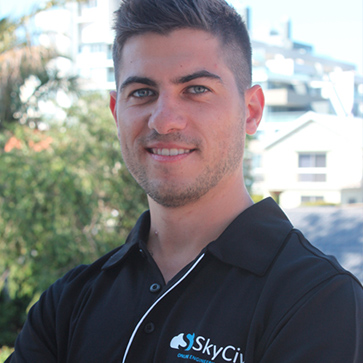Have you ever completely built a model, and asked yourself "am I sure this is correct??" Although it sounds counter-intuitive, an engineer who asks himself this question (and follows through with a check) is more than likely going to design a SAFE structure. It is an imperative skill and duty of care that an engineer questions their final result and validates their model and results through a number of possible means. This article will explore the questions an engineer should ask and methods in which to validate the results. This post will explore 5 ways that a designer can verify their model.
1. Check your Input!
This is where a great deal of mistakes are made. Just remember the old saying - "Junk in = Junk out" - meaning if you input the wrong values you are more than likely going to get the incorrect result. A possible list of possible ways an engineer can check their model setup is:
- Triple check your input - including load locations and support types
- Ensure your loads (including moments) are the right direction
- Ensure the correct units are being used
- Check the connectivity types to ensure the behaviour of the model in the real world
- Have another engineer confirm your model setup
The problem with ignoring this question, is that an engineer could trust the model without ever knowing an input has been entered incorrectly. Not only is this unsafe practice, but when the engineer finally finds the mistake they will have to repeat the entire design process which can often be a long and tedious task.
2. Do my results make logical sense?
Back in my years at university, I once had a fellow student in a design class design a slab that was 20m thick. He sat there calculating the depth of the slab and had somehow made a mistake along the way and carried it through until the end. He actually submitted this as his answer because he made the fatal mistake - he didn't ask himself whether or not the result made sense. You can imagine if in the workplace he actually submitted this as his design - chances are his boss wouldn't find it as funny.
An example of what an engineer could ask themself is, are my supports behaving as they should? A roller support, for instance, should not have a reaction in the X direction as it is free to translate. A fixed support, is more than likely going to have some moment reaction associated with it whereas pinned supports should not. These quick checks can help make sure you have entered the supports correctly and the model is a representation of real life.
3. Have an independent source check your input and model setup.
It never hurts to have a second set of eyes looking at what you've entered (provided they know what they are doing!). Have your superior or co worker check over your model setup - particularly your member connectivities and supports. Even better, if your independent source can rebuild your model from the ground up and arrive at the same answer - then chances are your model is correct. With the SkyCiv Professional Package - you can even check this with us. You can send us your file and we will help review that the model has been setup correctly!
4. Check the Results against another Software.
No structural analysis software is perfect, which is why it is good practice to compare the results of two independent programs. There are billions of combinations of structures, so there maybe a very specific combination of input that may cause an incorrect answer. SkyCiv offers a great affordable structural analysis software at just $50 month which is a perfect way to check your design values in a quick, accurate manner. Analysing through another software may also mean you have to re-build the model (although most of the time you can import the file) - this will provide even more of a check as it ensures your model has been built correctly.
5. Perform Hand Calculations.
There's no school like old school. Perform rough, back of the envelope calculations to validate your result. You can seperate individual members and just do simple calculations to arrive at a result. It removes all the complications of problem setup, software errors and provides a clean and independent method to check your model. If you're consistently arriving at a completely different answer to your model (as long as your maths is spot on!), then chances are there is a problem with your model setup. SkyCiv offers a range of tutorials available for you to perform hand calculations to check your work.
CEO and Co-Founder of SkyCiv
BEng (Civil), BCom



